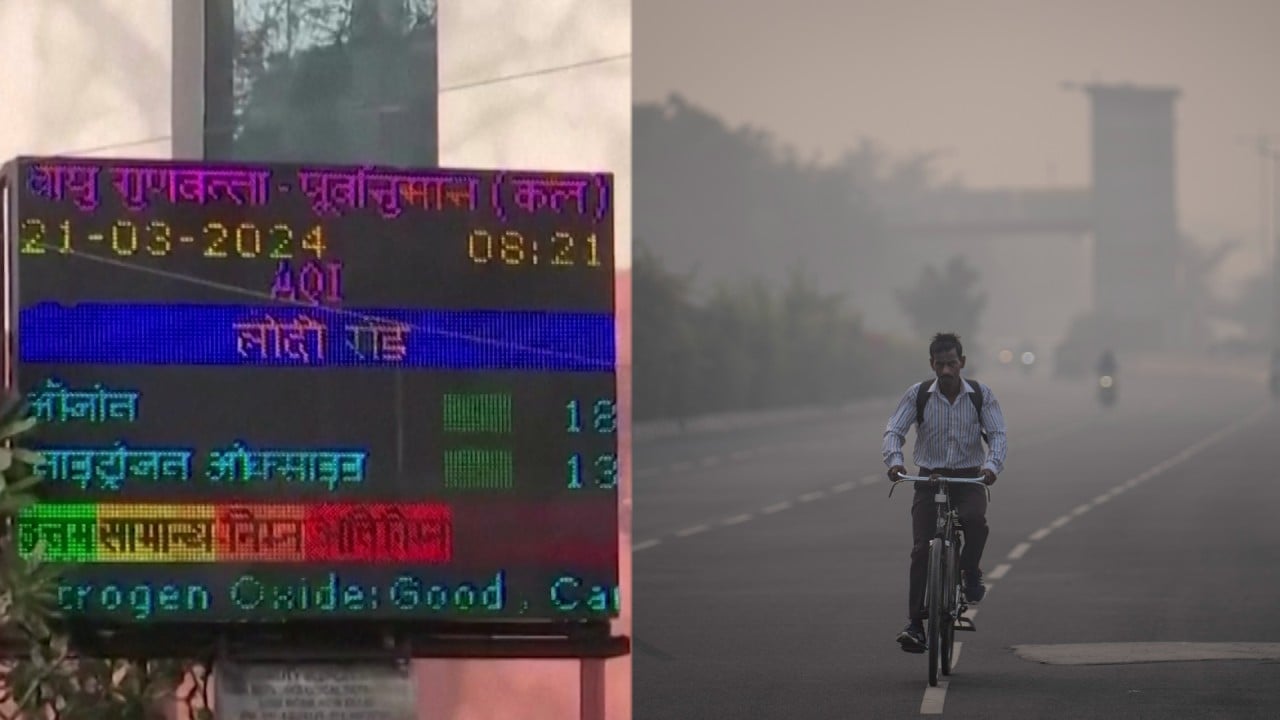Cleaner air in China causes ‘sudden warming’ in North America, study finds
“The period of 2010 to 2020 has witnessed the warmest Northeast Pacific (NEP) sea surface temperatures ever recorded, with several prolonged extreme ocean warming events,” said the team, which includes researchers from the US and Germany, in a paper published in the peer-reviewed journal Proceedings of the National Academy of Sciences.
The sea surface temperature along the coast from Alaska to California has been “suddenly warming in the past 10 years”, said Zheng Xiaotong, corresponding author and a professor at the Ocean University of China.
While year-to-year climate variation could play a role in the marine heating events that led to extreme weather on the west coast of North America, the researchers said that it did not fully explain the occurrence of these warm blobs.
Global warming was a “continuous phenomenon” that would not cause such specific warming, Zheng said, adding that there had been a long period of no change, and “then suddenly there was an increase in warming in the past 10 years”.
“So we hypothesised that this phenomenon may be related to some other human factors,” Zheng said.
Using climate models, the researchers found that “rapid aerosol abatement in China triggers atmospheric circulation anomalies beyond its source region, driving a substantial mean surface warming” in the Northeast Pacific.
Alongside greenhouse-induced warming and climate variability, the aerosol-induced warming “made the warm blob events more frequent and intense during 2010 to 2020”, affecting biodiversity and causing toxic algal blooms and drought, the paper said.
Aerosols are small particles or liquid droplets suspended in the air that can be emitted as pollution by burning fossil fuels and can counter the warming impact of greenhouse gases.
Beijing’s clean air policies have led to a decrease in pollutant emissions from the burning of fossil fuels in power plants and factories over the past decade, including aerosols such as black carbon – or soot – and sulphate, which have been linked to lung disease and other conditions.
Aerosols can reflect solar radiation back into space, blocking some of the energy from reaching the Earth’s surface and creating a cooling effect. Aerosols can also increase clouds’ ability to reflect solar radiation.
Some aerosols also absorb sunlight, causing temporary cooling on the surface but eventually leading to warming.
Zheng said the local warming effect of the reduction in aerosols in China had been studied previously but its effects on other regions had been overlooked.
The team compared models that reflected China’s aerosol reductions along with models that simulated a plateau, rather than a decrease, in aerosol emissions. They found that a downward trend in aerosol emissions coincided with an increase in mean warming in the Northeast Pacific.
In a simulation where aerosols were the only changed variable and greenhouse gases were fixed at pre-industrial levels, the team found that there was a “continuous cooling” of sea surface temperature in the Northeast Pacific until around 2007, after which a rapid warming began that followed the emissions reductions.
The team said this occurred due to local warming on the coast of Asia intensifying the Aleutian Low – an atmospheric low-pressure patch off the coast of Alaska – and shifting it southwards.
The atmospheric circulation anomaly weakens surface winds and therefore suppresses evaporative cooling in the Northeast Pacific, leading to an increase in sea surface temperature.
China’s increase in aerosol emissions was due to industrialisation, and Zheng said it was possible that these earlier emissions “greatly slowed down the warming” of the Northeast Pacific in the past.
Despite the potential downstream effects that aerosol reductions in one location can have on another, Zheng said improving air quality was still important because of the negative health impacts of human-caused aerosol emissions.
According to the paper, the research highlights the need to consider worsened risks arising from a reduction in human-made aerosol emissions in assessing the impacts of climate change.
Zheng said he hoped their research could contribute “to accurate climate projection and effective adaptation to climate change”.

